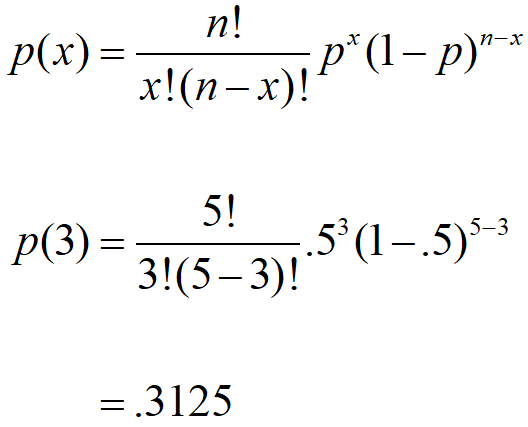In order for an experiment to be called a Bernoulli trial, an experiment must meet each of three criteria:
- There must be only 2 possible outcomes, such as black or red, sweet or sour. One of these outcomes is called a success, and the other a failure. Successes and Failures are denoted as S and F, though the terms given do not mean one outcome is more desirable than the other.
- Each outcome has a fixed probability of occurring; a success has the probability of p, and failure has the probability of 1 – p.
- Each experiment and the result are totally independent of all other experiments and results.
Example: Six balls are drawn successively from a box containing 5 white and 10 red balls. Tell whether the trials of drawing balls are Bernoulli trials in the following conditions:
- When the ball drawn is replaced
- When the ball drawn is not replaced
Solution
- The number of trials is finite. When the drawing is done with replacement, the probability of success (say, white ball) is p =5/15 which is same for all six draws. Hence, the drawing of balls and being replaced after is an example of Bernoulli trials.
- When the drawing is done without replacement, the probability of success(i.e., white ball) in the first trial is 5/15, in 2nd trial is 4/14, if the first ball drawn is white or 5/14 if the first ball drawn is red and so on. Hence, the probability of success is not the same for white and red ball trials, hence the trials are not Bernoulli trials.
Binomial Distribution:
Characteristics of a Binomial Experiment
- The experiment consists of n identical trials.
- There are only two possible outcomes that can come from each trial which are success ‘S’ and failure ‘F’.
- The probability of S remains the same from one trial to another. This probability for the trial is denoted by p. The probability of F is denoted by q such that q = 1 – p.
- The trials are independent.
- The binomial random variable x is the number of Successes in n number of trials.

Or
P(x) = nCxqn-x px
p(x) = Probability of x ‘Successes’
p = Probability of a ‘Success’ that happens on a single trial
q = 1 – p
n = Number of trials
x = Number of ‘Successes’ in n trials
(x = 0, 1, 2, …, n)
n – x = Number of failures that occur in n trials
Example: Toss a coin 5 times in a row and note the number of heads and tails. What’s the probability of 3 tails?
